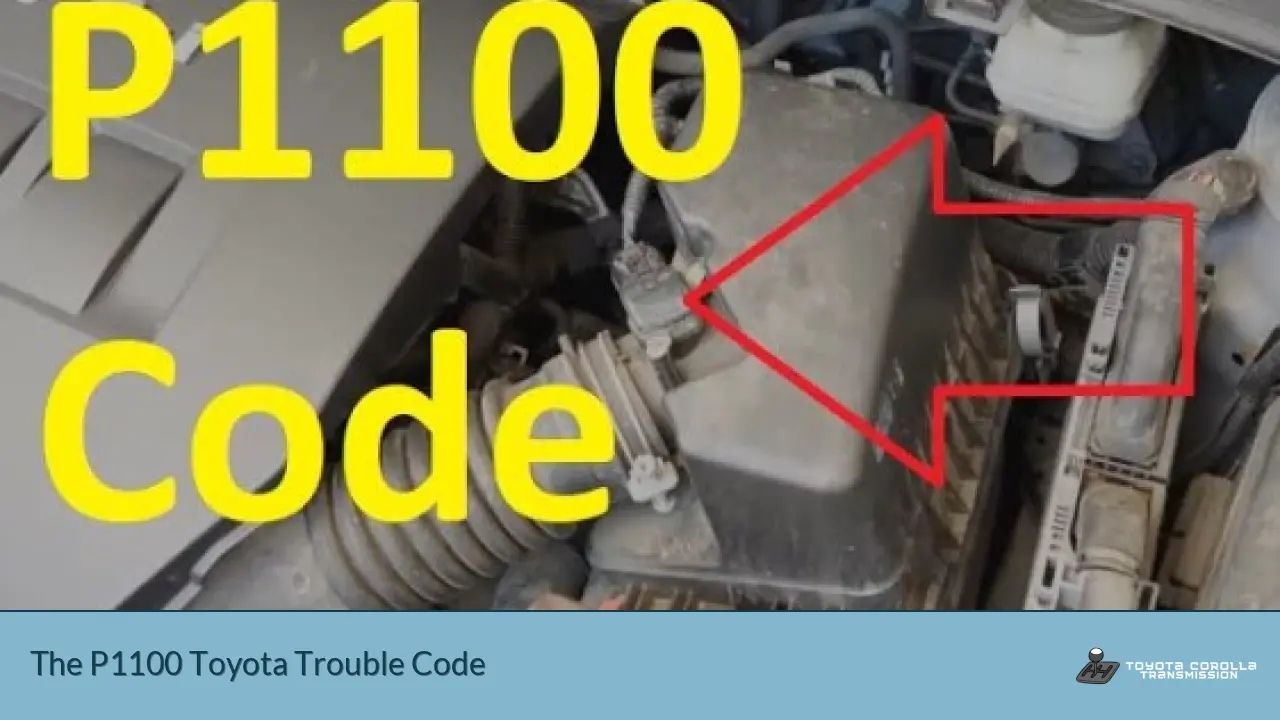When your Toyota’s check engine light illuminates and you retrieve the P1100 trouble code, you’re facing a potential issue with the Barometric Pressure (BARO) Sensor Circuit. This code is often perplexing, especially for vehicles that don’t have a standalone BARO sensor. Let’s dive into the intricacies of this fault code and explore its implications for your Toyota.
| Aspect | Details | Possible Solutions |
|---|---|---|
| Definition | BARO Sensor Circuit Malfunction | Check wiring, replace sensor if faulty |
| Symptoms | Poor engine performance, reduced fuel efficiency | Address underlying cause, clear code |
| Common Causes | Faulty ECM, damaged wiring, malfunctioning MAF/MAP sensor | Inspect and repair as necessary |
Understanding the BARO Sensor
The Barometric Pressure Sensor, or BARO sensor, plays a crucial role in your Toyota’s engine management system. It measures atmospheric pressure to help the Engine Control Module (ECM) adjust fuel injection and ignition timing for optimal performance at different altitudes.
Function and Location
In many Toyota models, the BARO sensor is integrated into the ECM itself, rather than existing as a separate component. This integration can sometimes lead to confusion when diagnosing the P1100 code, as there’s no external sensor to inspect or replace.
The P1100 Code Conundrum
When the P1100 code appears, it doesn’t necessarily mean there’s an issue with a physical BARO sensor. Instead, it often indicates a problem with the ECM’s ability to accurately measure or interpret barometric pressure data.
Common Causes of P1100
Several factors can trigger the P1100 code in your Toyota:
1. ECM Malfunction
The most frequent cause is a fault within the ECM itself. Over time, electronic components can degrade or fail, leading to inaccurate pressure readings.
2. Wiring Issues
Damaged or corroded wiring in the engine’s electrical system can disrupt the flow of data, causing the ECM to misinterpret barometric pressure readings.
3. MAF or MAP Sensor Problems
In vehicles without a dedicated BARO sensor, the ECM often relies on data from the Mass Airflow (MAF) or Manifold Absolute Pressure (MAP) sensors to calculate barometric pressure. A malfunction in either of these sensors can trigger the P1100 code.
Diagnosing and Fixing P1100
Addressing the P1100 code requires a systematic approach:
Step 1: Verify the Code
Use a reliable OBD-II scanner to confirm the P1100 code and check for any additional trouble codes that might provide context.
Step 2: Inspect Wiring and Connections
Carefully examine all relevant wiring and connections for signs of damage, corrosion, or loose connections. Pay special attention to the MAF or MAP sensor wiring if your Toyota uses these for barometric pressure calculations.
Step 3: Test MAF or MAP Sensor
If your vehicle relies on these sensors for barometric data, testing their functionality is crucial. A faulty sensor can mimic a BARO sensor issue.
Step 4: ECM Evaluation
If all other components check out, the issue likely lies within the ECM itself. Professional diagnostic testing may be necessary to confirm an ECM fault.
Step 5: ECM Replacement or Repair
In cases where the ECM is confirmed faulty, replacement is often the most reliable solution. Some specialized shops offer ECM repair services, which can be a more cost-effective option.
Preventing Future P1100 Codes
While some causes of the P1100 code are unavoidable, you can take steps to minimize the risk of recurrence:
- Regular maintenance: Keep up with your Toyota’s scheduled service to ensure all systems are functioning optimally.
- Protect electrical components: Shield your vehicle’s electrical system from moisture and extreme temperatures when possible.
- Use quality parts: When replacing sensors or other components, opt for high-quality OEM or equivalent parts to ensure proper functionality.
FAQs
What does the P1100 code mean for my Toyota?
It indicates a malfunction in the Barometric Pressure Sensor circuit, often related to the ECM or associated sensors.
Can I drive with the P1100 code?
While possible, it’s not recommended as it may lead to reduced performance and potential engine damage.
How much does it cost to fix a P1100 code?
Costs vary widely, from $100 for simple repairs to over $1000 for ECM replacement.
Will a P1100 code clear itself?
It’s unlikely to clear on its own and usually requires addressing the underlying issue.
Is the P1100 code serious?
While not immediately dangerous, it should be addressed promptly to prevent potential engine performance issues.

